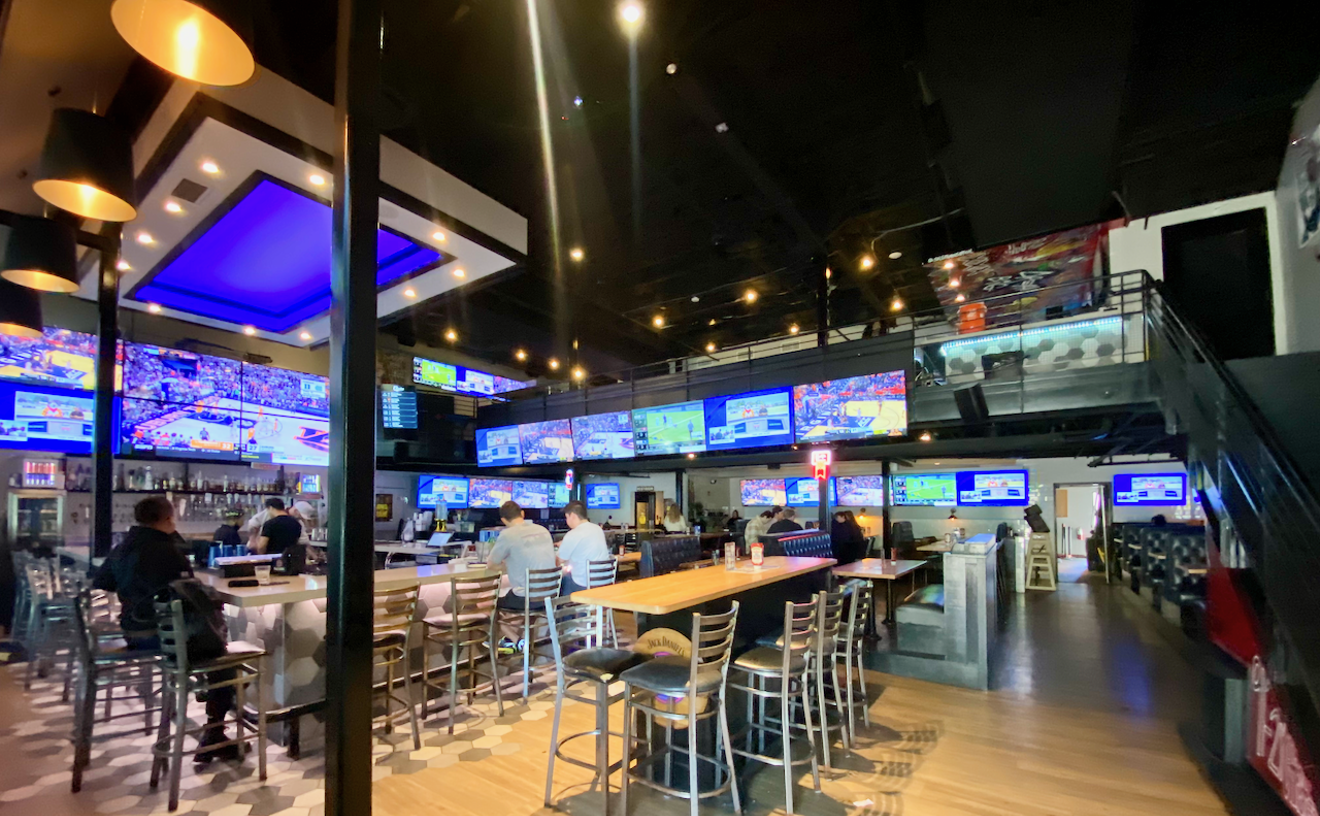So we did laps, down to Belt Line, up the frontage road, and back to Campbell. Another call. This time the gentleman told us to look for the bowling alley. We drove up and down again, looking for big bowling pins and men wearing funny shirts in the parking lot. No bowling alley. Another call. We told the gentleman there is nothing on the southeast corner of Campbell and Central. So then he said to try the northwest corner. "I don't really understand the whole north-south thing," he says. That's the problem with flat terrain. We can't tell where we are.
Yet after we found Rasoi, we wondered how we could possibly have missed it. Outside, it looks like an Indian palace, with rippled arches and a dome-like façade on the roof. Inside, it looks more like a den, with lots of wood paneling and booths sheathed in brown vinyl. I found myself looking for the air-hockey table. On the tables are placed plates of papad, crispy lentil wafers next to little dishes of mint chutney and tamarind chutney. The wafers were delicious, savory, and snapping crisp.
Mulligatawny captured the taste buds as well. This traditional soup from southern India features a rich broth with a fierce curry aroma. Rasoi's smooth, thick broth was replete with lentils and bits of chicken.
The assorted appetizer platter was riddled with problems. Vegetable samosas, triangular pastries stuffed with potatoes and peas, were fine, if a little greasy. But the vegetable pakoda, chickpea-batter-covered onions that kind of looked like little octopuses crushed by a work boot, were greasy and a little mushy. Desiccation afflicted the remaining appetizer debris. Seekh kebab, ground lamb logs skewered and roasted, was extremely dry, as were the tandoori chicken wings, a little twist on sports-bar buffalo wings, perhaps.
Saag panir, creamed spinach infiltrated with chunks of cheese melted into the slurry, was delivered to the table cold, but the metal dish was placed on a rack under a flame, and as it heated, the aromatic blend of pulverized spinach, cream, and spices became smooth with a heady flavor.
Although various factions in India, such as the Sikhs and Muslims, have choice meat recipes, most of India's Hindus remain strict vegetarians, which is why it is perhaps a little odd to see what might be called a cowboy dish on an Indian menu. But Rasoi's tandoori steak, a 14-ounce marinated rib eye, has hints of just that, even though it's impaled on a skewer and cooked in a tandoori oven. Served with a very dry baked potato, the meat was profusely pocked with fat globules, and it was a little tough and not exceptionally juicy. But the seasoning was potent, making for an engaging twist on steak, though not one a cowboy's mouth would water over.
It wouldn't water over the boti kebab either. Served on a sizzling metal dish on a bed of onion and bell pepper slivers, chunks of skewered and tandoori-cooked lamb suffered from a miserably dry leatheriness and a strident gamy taste.
It's hard to know what role the aloo paratha--bread stuffed with potato and spices--might best serve. The bread was so greasy that it shimmered like a lamé jacket. But we soon found a use for it: as a thing to dip into the sauce of the mutton roganjosh. This is a dish with generous pieces of bone-in meat cooked in its own juices with spices. The rustic bits of flesh were flavorful and hearty with a clean flavor.
Chicken nilgiri korma, chicken pieces cooked in fresh mint and cilantro with curry, were tender and breathy with herbal wispiness.
The other stumbles were the rice dishes. The lemon rice was dry and greasy. Oddly, instead of infusing the white rice with delicate shavings of carrot, Rasoi blends in grains of rice dyed with orange food coloring, ostensibly to mimic carrot. Still, the color did little to add to the appeal. The rice was dry and crunchy, like breakfast cereal.
While Rasoi isn't the best Indian food in Dallas by any margin, it is fine, especially if you just fill up on the delicious complimentary papad and order a mutton dish to share. And I might suggest a compass instead of the traditional cash tip for the servers.










